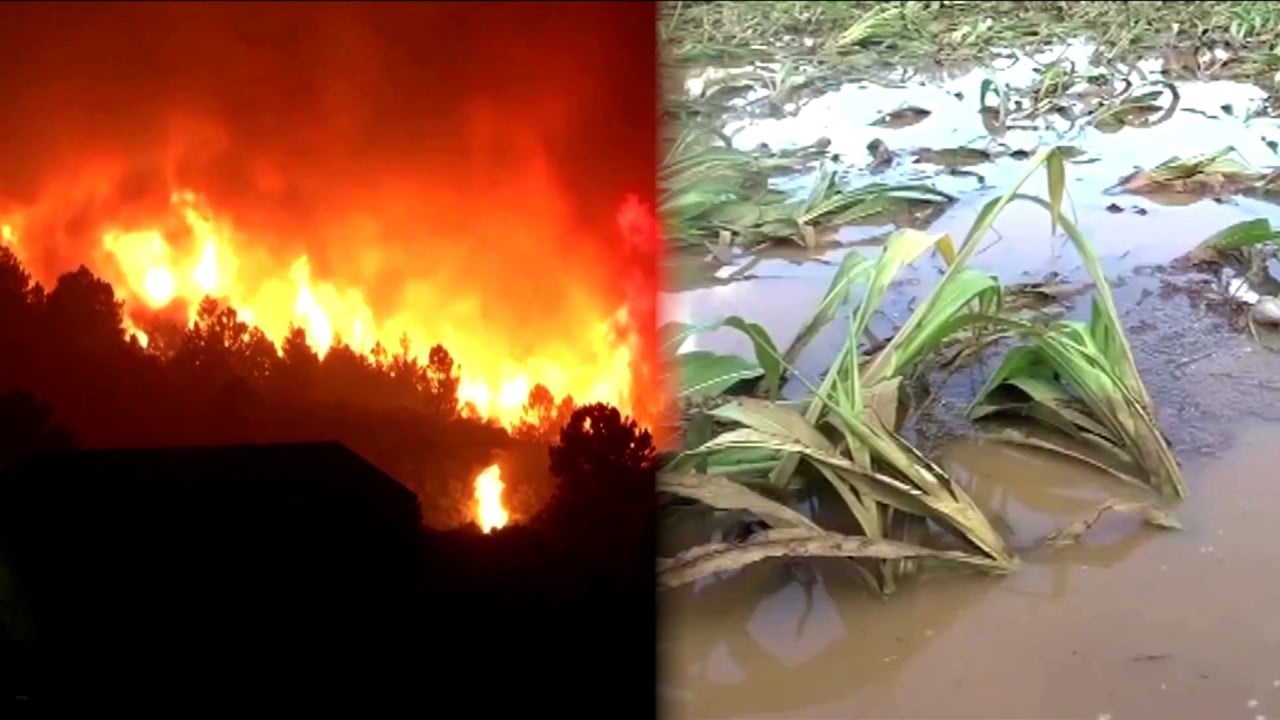
How El Nino is threatening China’s food-security drive
- Mother Nature has been throwing a lot of extreme weather at China, and it is expected to intensify as the El Nino climate pattern could make 2023 the hottest year ever
- Worsening floods in the south and droughts in the north could have a devastating effect on agriculture, manufacturing and China’s economy at large
A rise in natural disasters associated with abnormal and extreme weather is threatening to hinder China’s agricultural-security drive, and this outsized threat demands that the country ramp up efforts to deal with the coming uncertainties, according to climate specialists.
This is likely to mark the return of “floods in the southern regions and droughts in the north” in China, according to Zhou Bing, chief climate officer with the China Meteorological Administration.
“El Nino has had a big impact on agriculture since its emergence, with soybean futures prices falling during the period and having an impact on yields of wheat, corn, rice and more,” Zhou said on Tuesday.
El Nino and its counterpart, La Nina, are climate patterns that begin in the Pacific Ocean every two to seven years, on average. The last strong El Nino occurred in 2016, and in 1998 it was so impactful that it led to China’s worst flooding in decades, with reported direct economic losses of 255.1 billion yuan, or 3 per cent of the gross domestic product (GDP) that year.
Labelling agricultural security a pillar of national security, Beijing has doubled down on efforts in recent years to strengthen agricultural production, infrastructure and home-grown innovation.
The far-reaching impact of extreme weather on agriculture is evident, according to a study published on May 4 by a team led by professor Zhou Feng at Peking University’s College of Urban and Environmental Sciences.
“Extreme rainfall has reduced one-twelfth of China’s rice yield over the last two decades,” Zhou Feng said in the study, published in Nature Food, a monthly peer-reviewed academic journal.
The government-backed Economic Daily called on the country to strengthen its capacity to prevent and mitigate damage by agricultural disasters, which pose the biggest risks to farmers.
Analysts also called on Beijing to help farmers address crop-seed damage, plant-disease outbreaks, delayed germination, and water-scarcity-induced soil erosion.
“We can feel the urgent importance that China places on food security, and how to deal with natural disasters in agriculture has been a focus for breeders over the years,” said Huang Bangquan, a plant genetics professor of life sciences at Hubei University.
“Breeding more drought- and flood-resistant seeds have been a long-standing research hotspot in our agricultural breeding field,” Huang said.
A professor of agricultural studies from Shihezi University in Xinjiang said that the government can help mitigate weather-related agricultural damage by improving agricultural infrastructure, focusing on seed breeding, providing timely weather warnings, and raising awareness among farmers.
“The government could invest more in agricultural infrastructure, such as irrigation and drainage facilities,” said the professor, who asked not to be identified. “They play a very important role in dealing with natural disasters.”
Extreme weather threatens China’s food security: ministries
Last year, China invested 110.64 billion yuan (US$15.5 billion) in water conservation and implemented 16,000 water projects, according to the Chinese Ministry of Water Resources.
The current El Nino pattern is likely to result in the world’s warmest year on record, hotter than the previous record set in 2016, and Zhou Bing said the severity and impact need to be further studied.
El Nino is anticipated to cause US$3.4 trillion worth of global economic losses in the coming five years, according to a study published last month in the journal Science. That would be close to the GDP of India, the world’s fifth-largest economy, in 2022.
The study, by Christopher Callahan and Justin Mankin, noted that the losses caused by El Nino could reach US$84 trillion by the end of the century, as the extreme weather pattern disrupts agricultural production and manufacturing, while also contributing to the spread of disease.



.jpg?itok=t8OJmsoF)